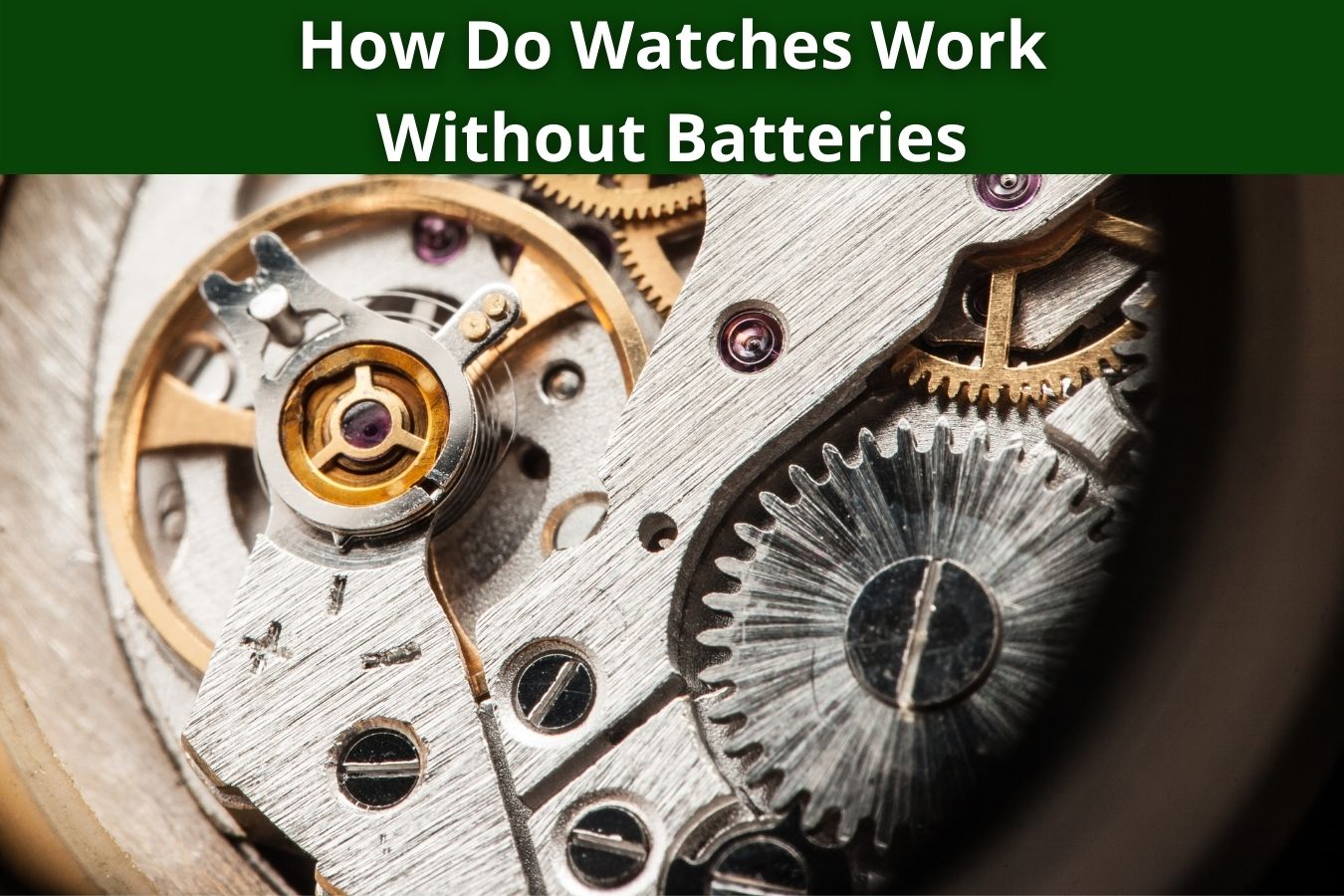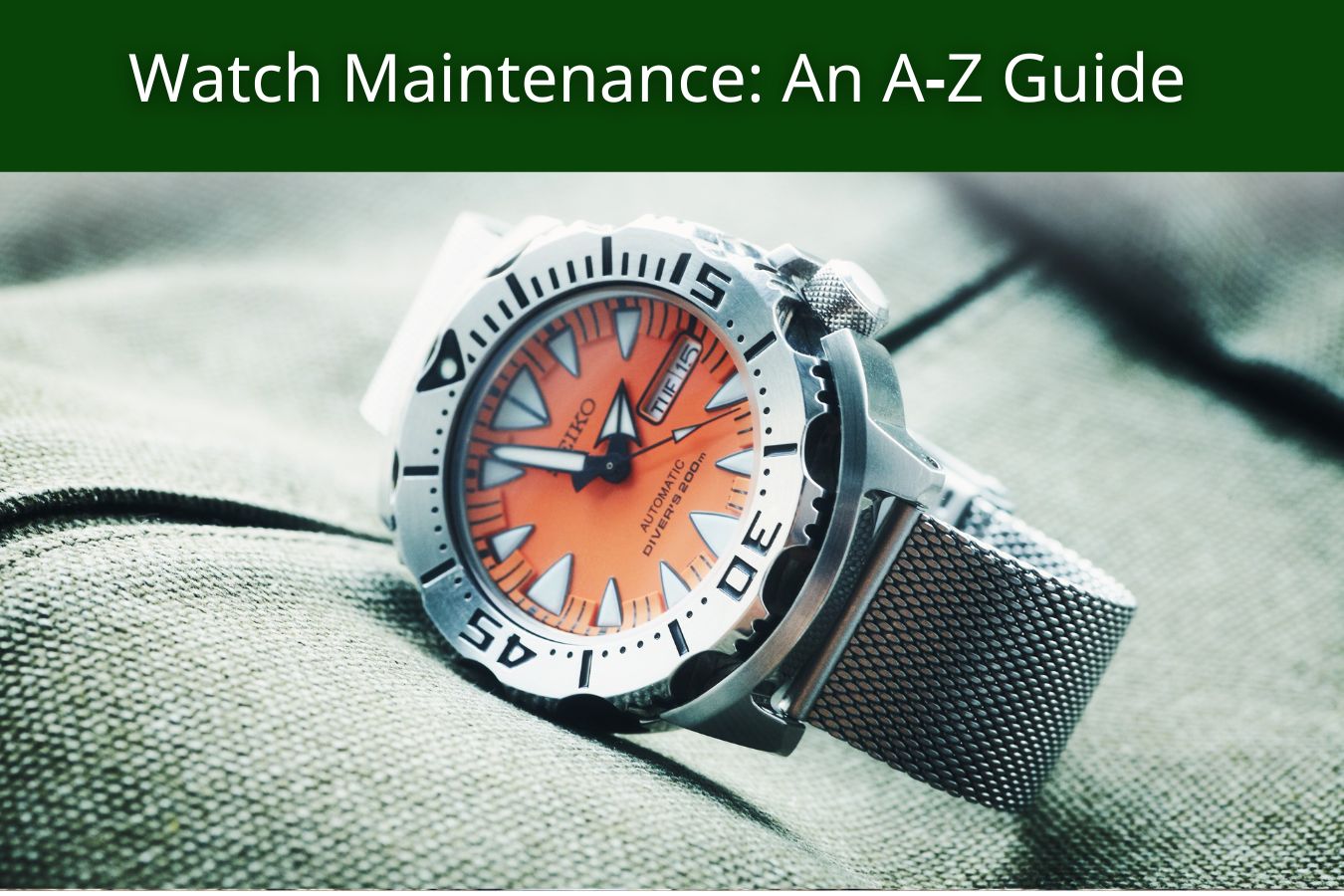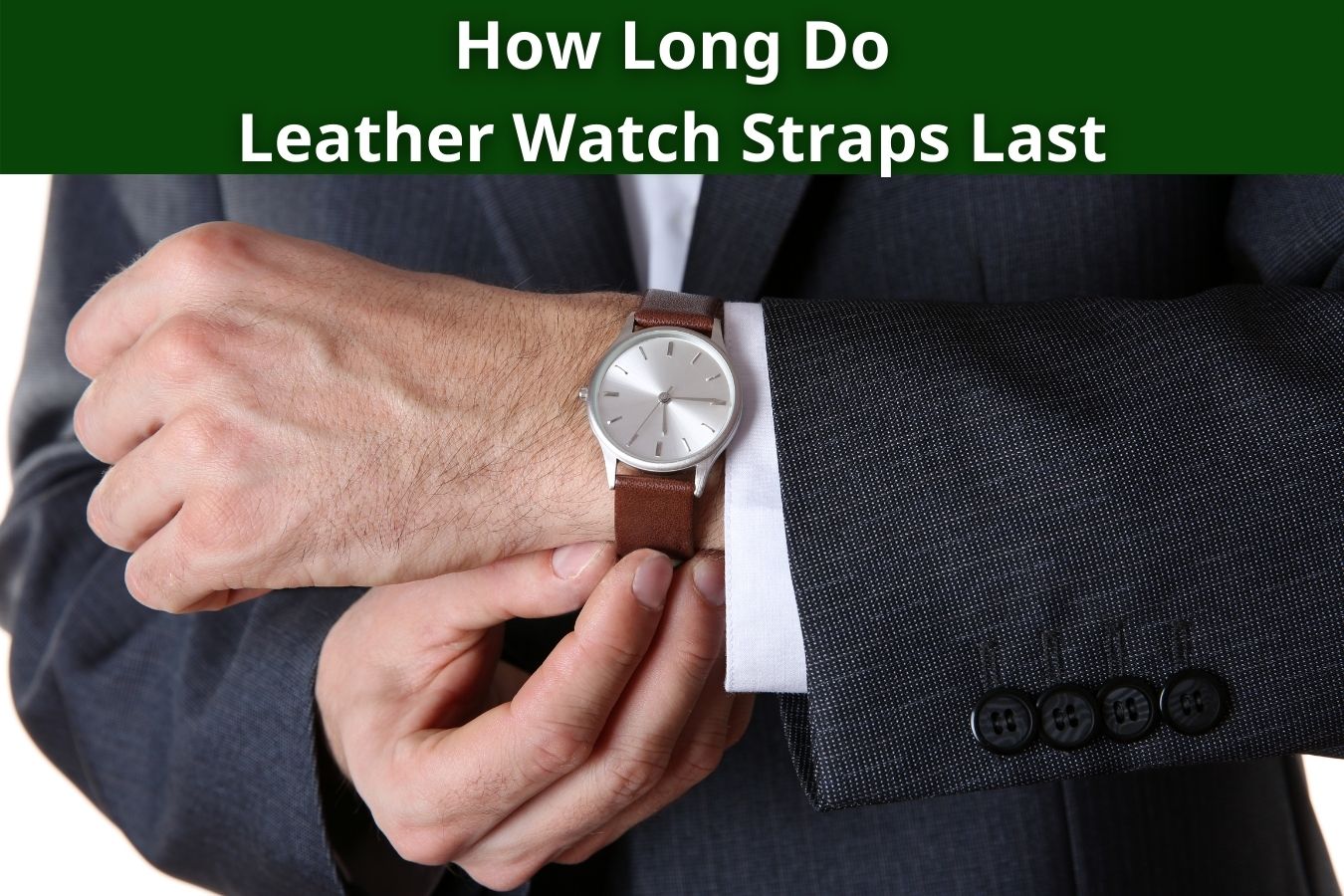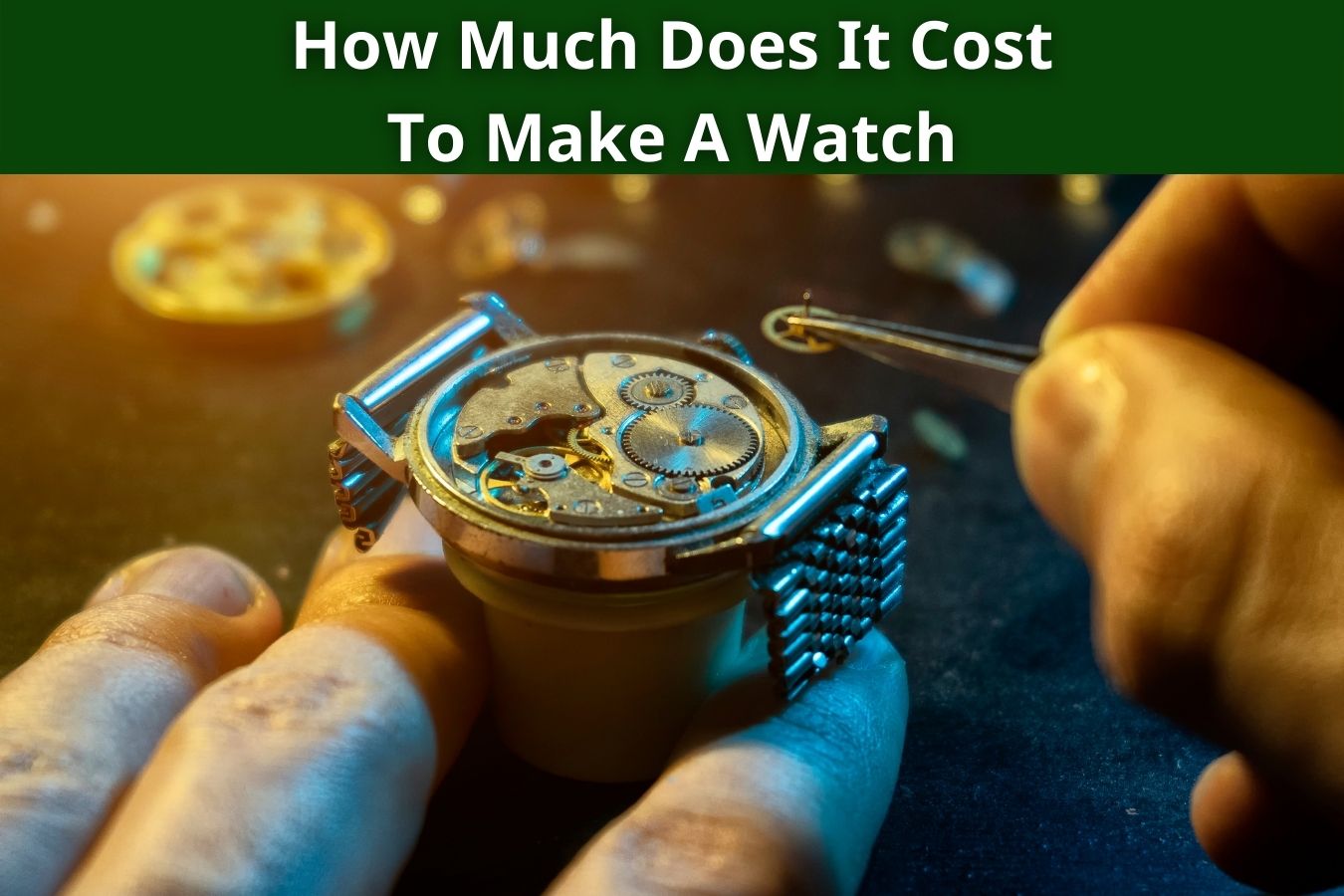So how do watches work without batteries? Watches use energy stored in winding their mainspring to power their internal mechanisms or movements.
History Of Timekeeping
To understand how watches work without batteries, we need to first look into how mechanical watches were invented.
Before watches were invented, humans had invented different instruments for timekeeping. Humans initially estimate time using the positions of celestial bodies. It got better with the invention of sundials and water clocks. Sundials tell daytime by the cast of the shadow of its gnomon on its calibration called the dial.
Water clocks on the other hand measure time by the calculated inflow or outflow of water to or from a vessel. The amount of water change in the vessel is then used to estimate time.
There are a lot of other time-keeping instruments like sand time and hour time but the invention of mechanical clocks in the 14th century marked the beginning of a major advancement in the history of timekeeping. Mechanical clocks later shrunk down to watches with the invention of mainsprings for energy storage and usage over a period of a day or two.
Mechanical watches would have become obsolete in the 1960s with the invention of the cheaper and more accurate Quartz watches. However, they were salvaged into luxury watches now worn mainly for the honor and prestige associated with their cost and brand names.
What Are Mechanical Watches (The First Watches Made To Work Without Batteries)
Currently, there are 2 categories of commercial watches which are quartz watches and mechanical watches.
Mechanical Watches are watches that use energy stored in a mainspring through winding or self-winding means to power its movements and complications. Movements or caliber refer to the internal mechanism of a watch that allows it to perform its functions.
A variant of mechanical watches is known as Automatic watches. These watches don’t need to be winded manually by hand. Instead, they contain self-winding mechanisms that allow them to keep working as long as their owners wear them often.
All automatic watches are mechanical watches however, not all mechanical watches are automatic. Both manual and automatic mechanical watches do not require batteries to perform their functions. Due to their similarities, we will be using the term mechanical watches to imply both manual watches and automatic watches subsequently.
The second watch types are the Quartz watches which uses the piezoelectric characteristics of quartz to run its movements. These types of watches send energy from batteries to quartz crystals then they observe the vibration of the crystals through a chip and translate the information into time.
Parts Of Mechanical Watches
Mechanical watches come with hundreds of parts that are complexly connected to effectively perform their functions without batteries. After looking at the basic individual parts of mechanical watches, we will look into how they all fit together. The parts of mechanical watches can be categorized into two.
- The Exterior parts
- The Interior parts or movements
While most watch lovers give most of their attention to the exterior looks of a watch, an expert gives equal attention to both the exterior and interior designs of a watch.
Exterior Parts Of Mechanical Watches
Case
The case is the part that holds the movements of a watch. The case is designed to protect the movements which are why it is often made of steel. The case can also be made of materials like gold, titanium, bronze, ceramic, or even carbon based on the desired purpose of the watch.
The case of a watch takes shape based on the designs of the movements within.
Crystal
The crystal of a watch is the transparent screen that covers the dial of the watch. It protects the screen of dials and hands of watches while also allowing observers to see through. They tend to be made of acrylics which are plastics and minerals which are glasses. Luxury watches have crystals made of sapphire for extreme clarity and scratch resistance.
Bezel
The bezel is the round ring that connects the crystal of a watch to the lug. It may be modified to have other functions like timezones or calendars. Bezels are made of either ceramics or metals like steel, gold, or titanium.
Lug
The lug holds the case of a watch and provides anchor points for the straps or bracelet of the watch. The watch lug is sometimes referred to as the watch horn and is made of metals similar to the case of the watch.
Dial
The dial of a watch is essentially the face of the watch and a dial with sophisticated designs tends to marvel watch lovers. The Dial is the calibrated layer that sits on the front plate of the case of a watch. It contains markings for timekeeping and other complications of the watch. It also holds the signature of the watch brand. The dials of watches come in different colors, shapes, and designs to give watch enthusiasts a wide range of options to choose from.
Straps or bracelets
The straps of a watch are the part that anchors the watch to your hand. It is connected to the watch through the lug and can be made of different materials based on the needs of its wearer.
Straps can be made of plastics, leather, or metals like steel. Exotic watches tend to have straps made from rare earth metals like gold.
Crown
The crown of a watch is the part that connects directly to the internal mechanisms of a watch. It allows a wearer to interact with the watch for time adjustments and complication settings. For mechanical watches, the crown can also be used to wind the mainspring that powers the watch.
Interior parts of mechanical watches
As we have said earlier, mechanical watches can be made of hundreds of individual parts that are intricately assembled. In this section, we will be looking at only the basic movements that ensure they work without batteries.
Mainspring
The mainspring is the most important piece of mechanical watches because they store the energy needed to drive other movements of watches. They are synonymous with batteries of quartz watches. The mainspring is a coiled metallic spring that can be up to 30 cm in length. They store energy by being winded mechanically by hand using the crown of a watch. The energy is then released at a calculated rate.
The wheel trains
The wheel trains are a series of large gear movements that are complexly interconnected. They are connected to the hands of the watches and their motion turns the hands for timekeeping and other functions of the watch. The larger gears are referred to as wheels and are made of brass while the smaller gears are referred to as pinions and are usually made of steel.
The gear trains receive energy directly from the mainspring but the rate at which they turn is moderated by another set of movements. The gear trains are also directly connected to the crown via a gear system. This connection makes it possible for time and complication adjustments.
The balance wheel
The balance wheel is the most sensitive part of mechanical watches. You can essentially consider it as the brain of the watch because it is the time-sensitive instrument in the watch. Apart from being sensitive balance wheel are very fragile and hence, it is highly fortified by a shock absorbing base to prevent damage while jewel bearing is used to ensure the near frictionless swinging of the balance wheel.
The gear trains transfer energy received from the mainspring to the balance wheel through the escapement. This energy sends the balance wheel swinging back and forth like a pendulum. The swinging is made possible by the hairspring, a tiny coil spring wounded around the base of the wheel train. The length of the hairspring can be adjusted to make a watch run faster or slower to increase its accuracy. A single back-and-forth swing or oscillation of the balance wheel occurs at specific intervals of time and is sensed again by the escapement.
The escapement
The escapement consists of the pallet fork and the escapement wheel. The escapement wheel receives energy from the wheel trains and transfers the energy to the balance wheel via the pallet fork. The balance wheel oscillates and regulates the spin rate of the escapement through the pallet fork. The regulation interplay between the balance wheel and the escapement further regulates the rate at which energy is delivered to the train wheels and hence, the timekeeping of the entire watch.
Jewel bearings
Jewel bearings are the bearings in which spindles of gears of watches turn. They are made from synthetic ruby and sapphire and their main purpose is to minimize friction. They are very important in watchmaking because they prevent the wearing of moving parts of watches. Wearing of parts of watches greatly impairs the accuracy of watches which is unacceptable in mechanical watches that are designed to last for decades.
Rotor
The rotor is the movement that separates automatic watches from manual watches as it is only found in automatic watches. The rotor is a semicircular metallic plate that can swing in full circles within the automatic watch due to the natural motions of the wearer’s wrist.
The circular motion of rotors connects to mainsprings through a complex connection of gears and helps to wind the mainspring. As long as an automatic watch is worn often, the mainspring will remain wound and the watch will continue to run. The mainspring of watches can also be winded manually in the case where they are not worn often.
Assembly Of Mechanical Watches.
The crown is connected to the mainspring the energy store of mechanical watches. The mainspring is then connected to the wheel trains. A series of gears complexly connected to control the hands of the watch. The wheel train is then connected to the escapement and wheel balance which complexly interact to sense time and in turn, regulate the wheel trains. These intricate parts are protected by supporting structures made of metal plates. The main plate serves as the base and provides support for most of the movements. Smaller supporting plates hold and protect different movements from damage.
Accuracy Of Mechanical Watches
The complicated structure of mechanical watches makes them hard to manufacture in mass which is why it is impossible for mechanical watches to compete with their quartz rivals in quantity. Due to their several moving parts, the accuracy of mechanical watches is highly impaired by friction. However, highly skilled watchmakers can minimize the error to less than a second per day. The beauty of mechanical watches is not in their accuracy but in the creativity and craftsmanship that goes into their productions.
FAQs
Mechanical watches don’t work with batteries. Instead, they are powered by a mainspring which stores energy and releases the energy in a calculated amount.
While battery-using quartz watches are more accurate than mechanical watches, watches are no longer worn for accuracy but for fashion. Mechanical watches tend to have the sophisticated look that will make you stand out. In the end, your preference is the most important factor in your choice of watch.
Mechanical watches tend to be expensive due to the craftsmanship that goes into producing them and the honor and prestige associated with the name of the brands that make them.
As Discussed
Watches that work without batteries are known as Mechanical watches and they run by the energy stored in their mainsprings by manual winding in manual watches or self-winding means in automatic watches.







